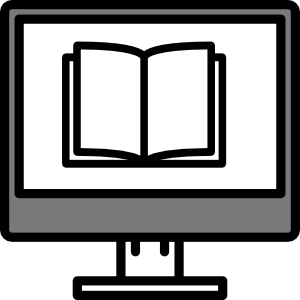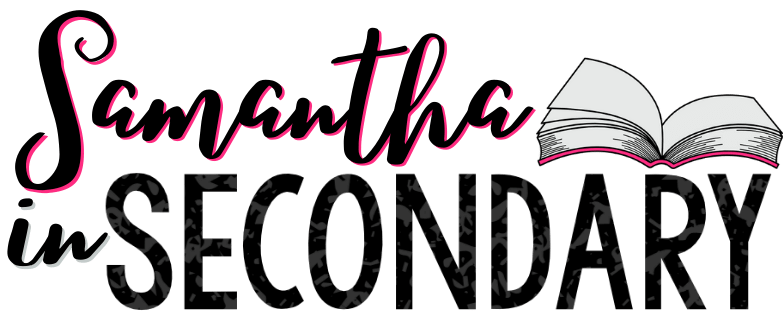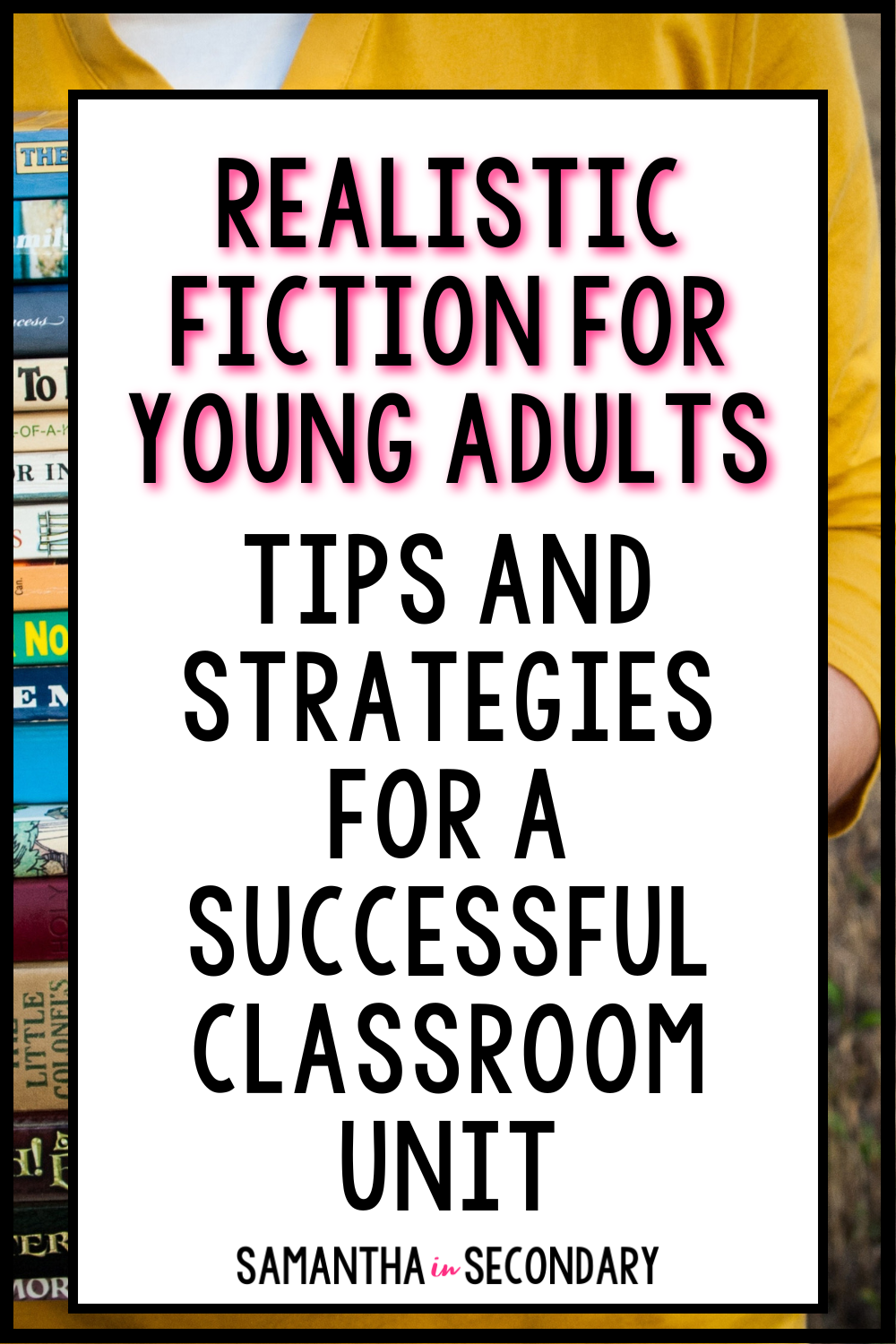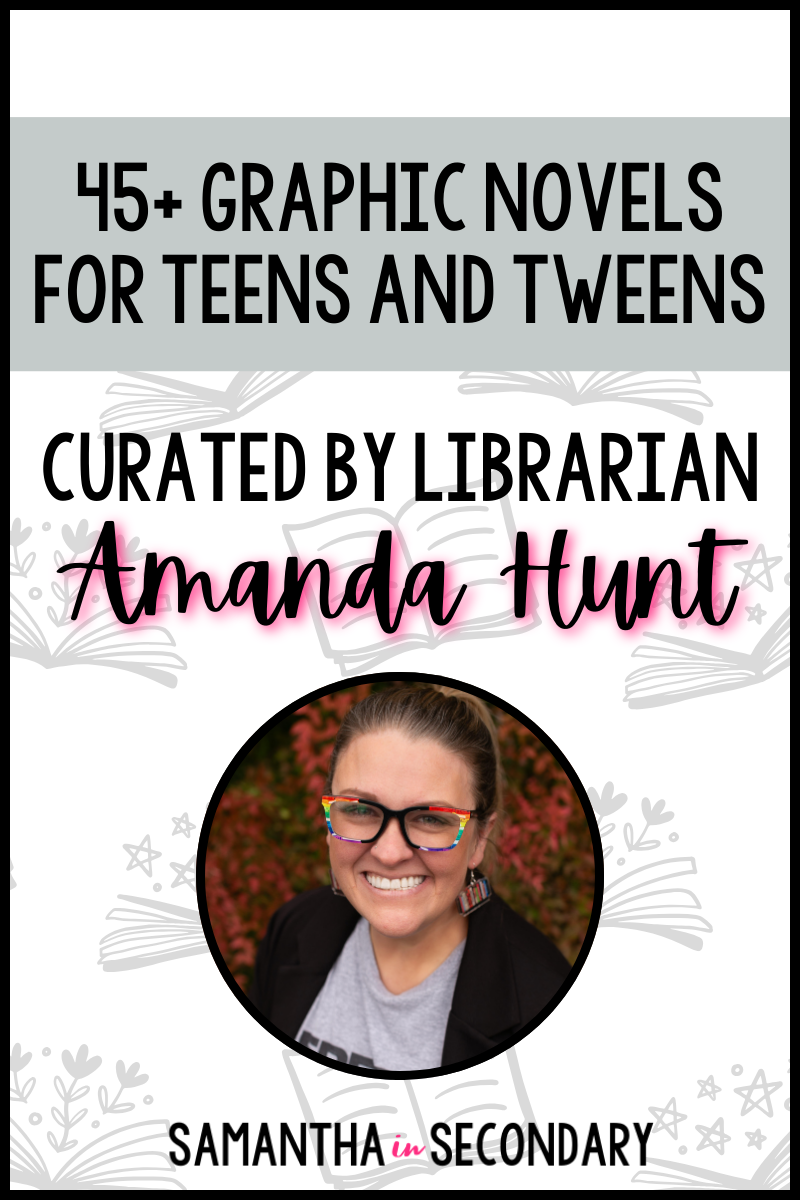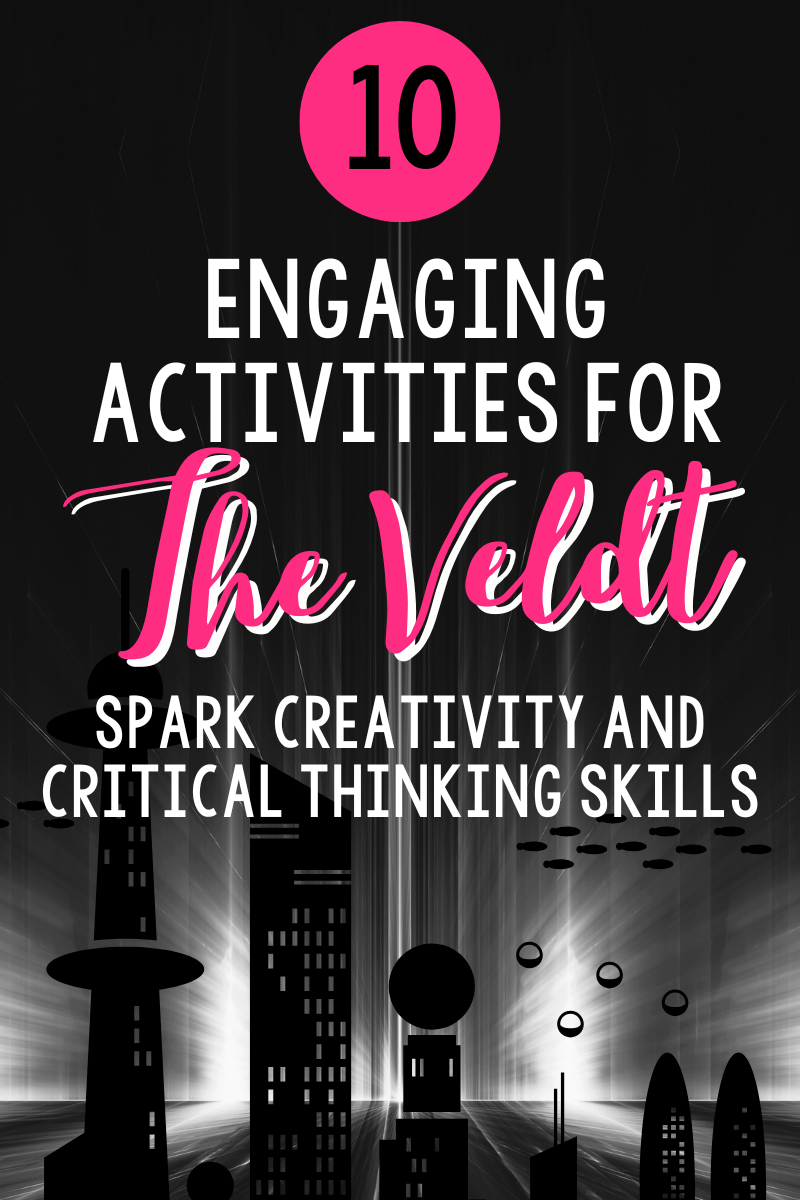The start of a new semester is the perfect time to try something different and inject some energy back into your classroom. Whether you’re looking for ways to jump-start student motivation, break out of mundane routines, or just add some fun activities to mix things up; we have compiled plenty of fresh ideas that you can use this semester to get your classrooms moving.
From poetry to goal setting and more, this post is sure to have something for everyone. Read on for 12 unique and engaging activities to kick off a new semester.
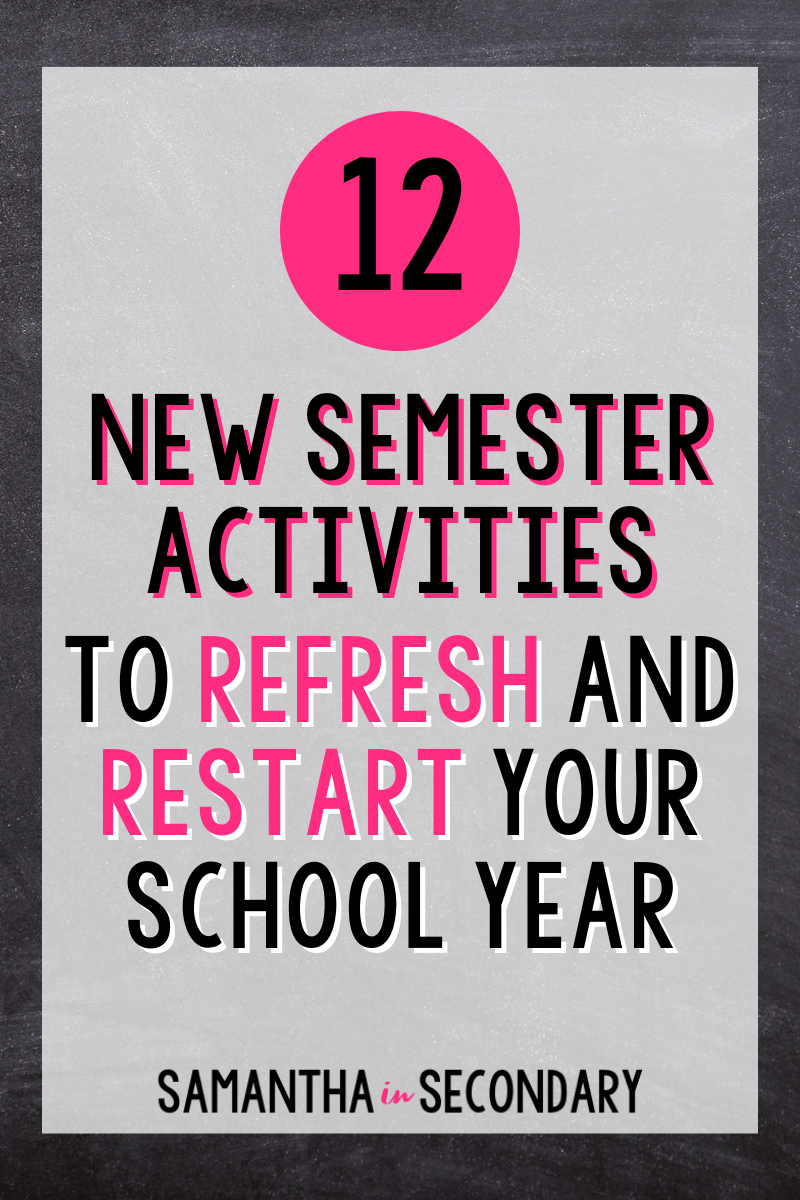
#1: Assess and Reflect on Learning Styles and Activities with a Multiple Intelligences Learning Profile
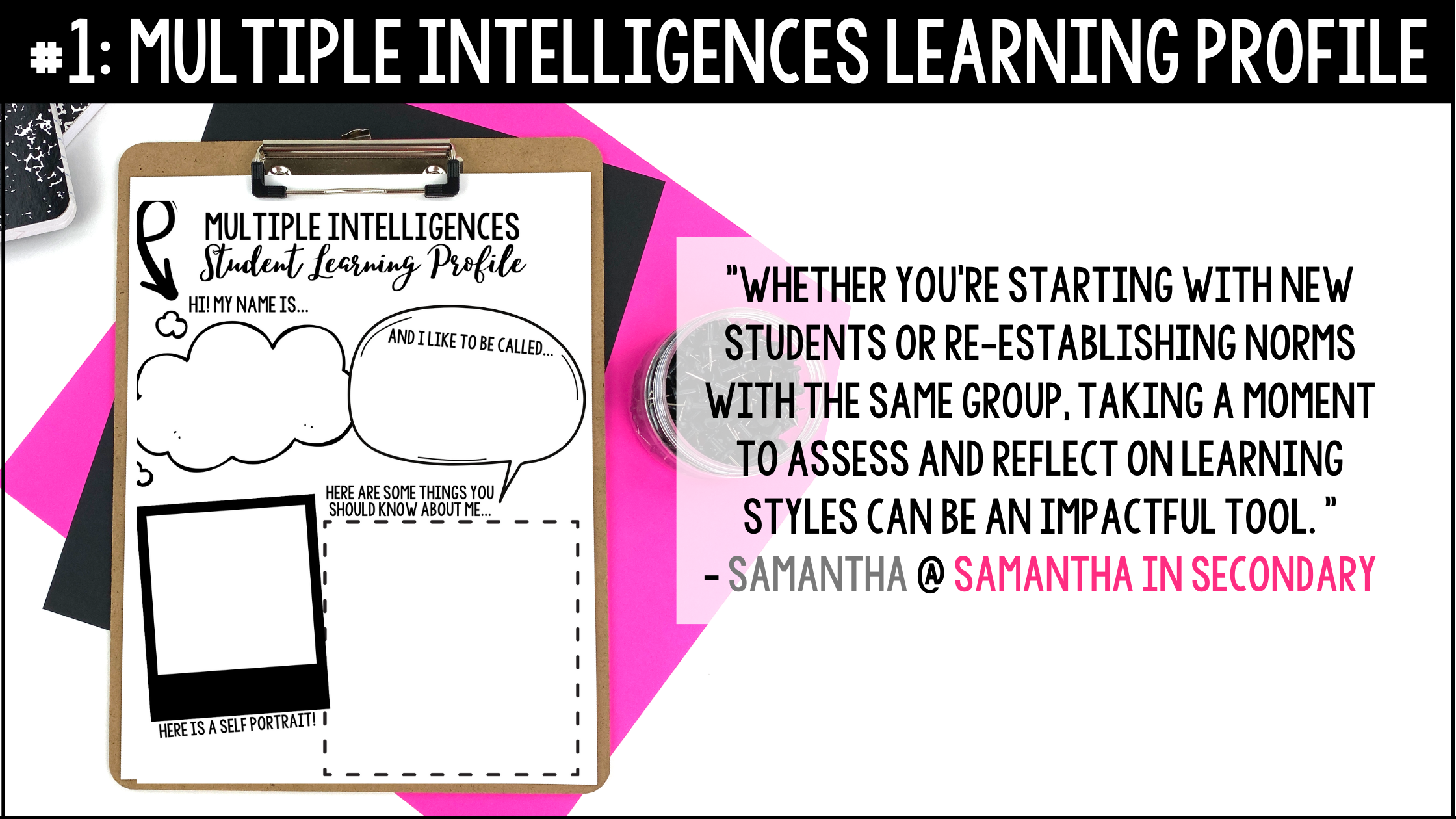
Whether you’re starting with new students or re-establishing norms with the same group, taking a moment to assess and reflect on learning styles can be an impactful tool. Which activities are working best for your students? How can you best serve your students through activities that work FOR them instead of AGAINST them?
Samantha from Samantha in Secondary loves to teach her students about Multiple Intelligences Theory. (Many of them have never even heard of the concept, and how powerful is it for a student to learn for the first time that there is more than one way to be “smart”?) Then, she has them take a simple inventory online, and create a learning profile that highlights all of the ways they learn best. Allowing students to share their findings with others is also a way to strengthen connections and learn more about your students.
Love this idea but don’t have time to recreate it? You can get Samantha’s done-for-you project that includes an informative article with doodle notes, attractive learning profile template, full lesson plan, and rubric here.
#2: Establish (or Re-Establish) Expectations for the New Semester with Poetry
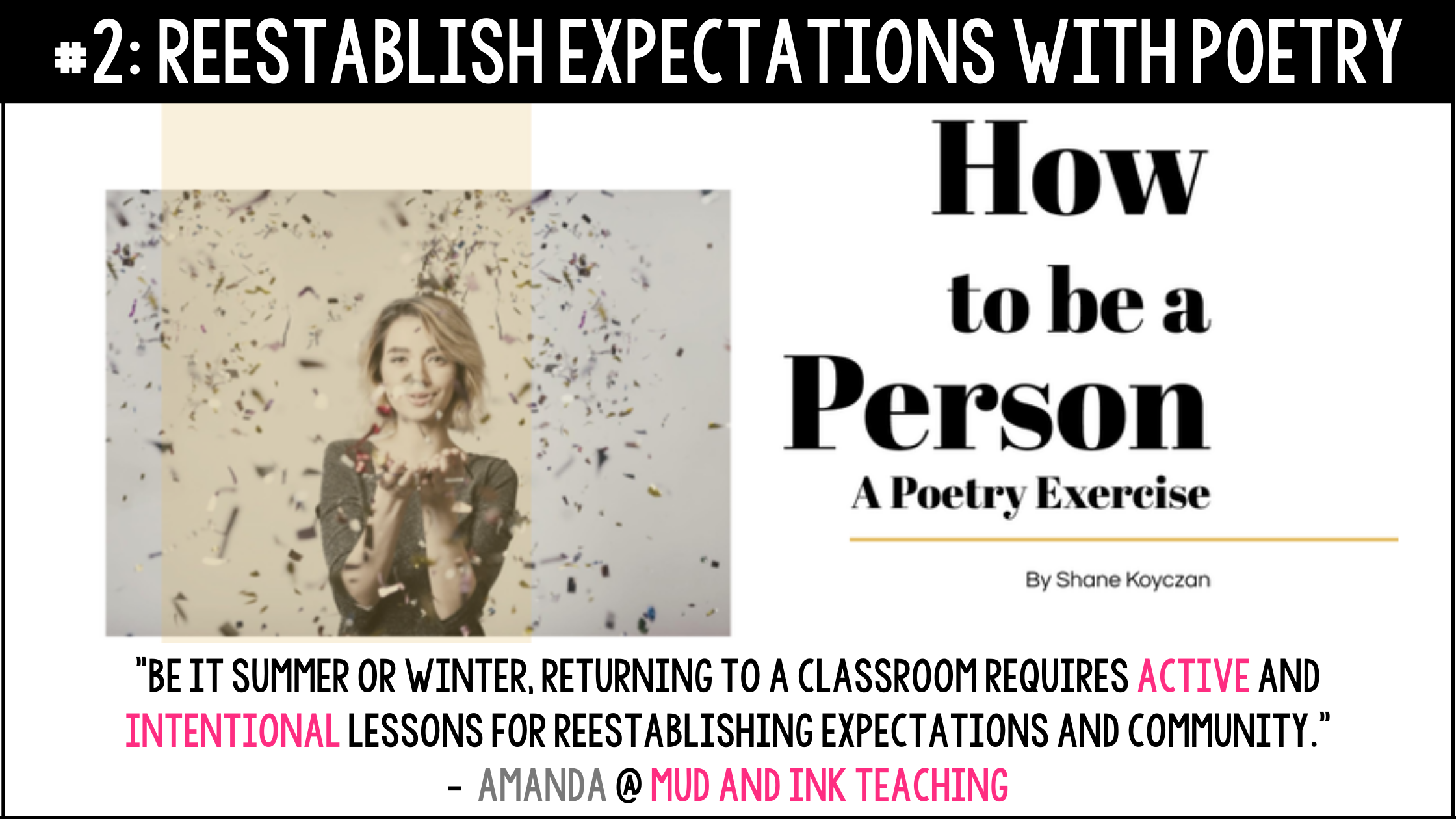
Amanda from Mud and Ink Teaching is no stranger to the trials and tribulations of resetting a classroom after an extended break. Be it summer or winter, returning to a classroom requires active and intentional lessons for reestablishing expectations and community, and one of Amanda’s favorite ways to do this is by making room for some poetry and creative writing.
One of Amanda’s favorite poems to use for the transition of one semester to the next is Shane Koyczan’s poem “How to Be A Person”. In this poem, Koyczan lists out the qualities that make us human. The poem is accessible, inspirational, and easy to imitate.
In the student imitation, students come up with their own list of ways to be a person and can submit them to you as-is, share them with a small group, or even be a piece to share in a whole-class poetry slam. You’ll be adding this to your yearly rotation after doing it just once! Here is Amanda’s free slide deck with step by step instructions.
#3: Journal Writing to Start a New Semester
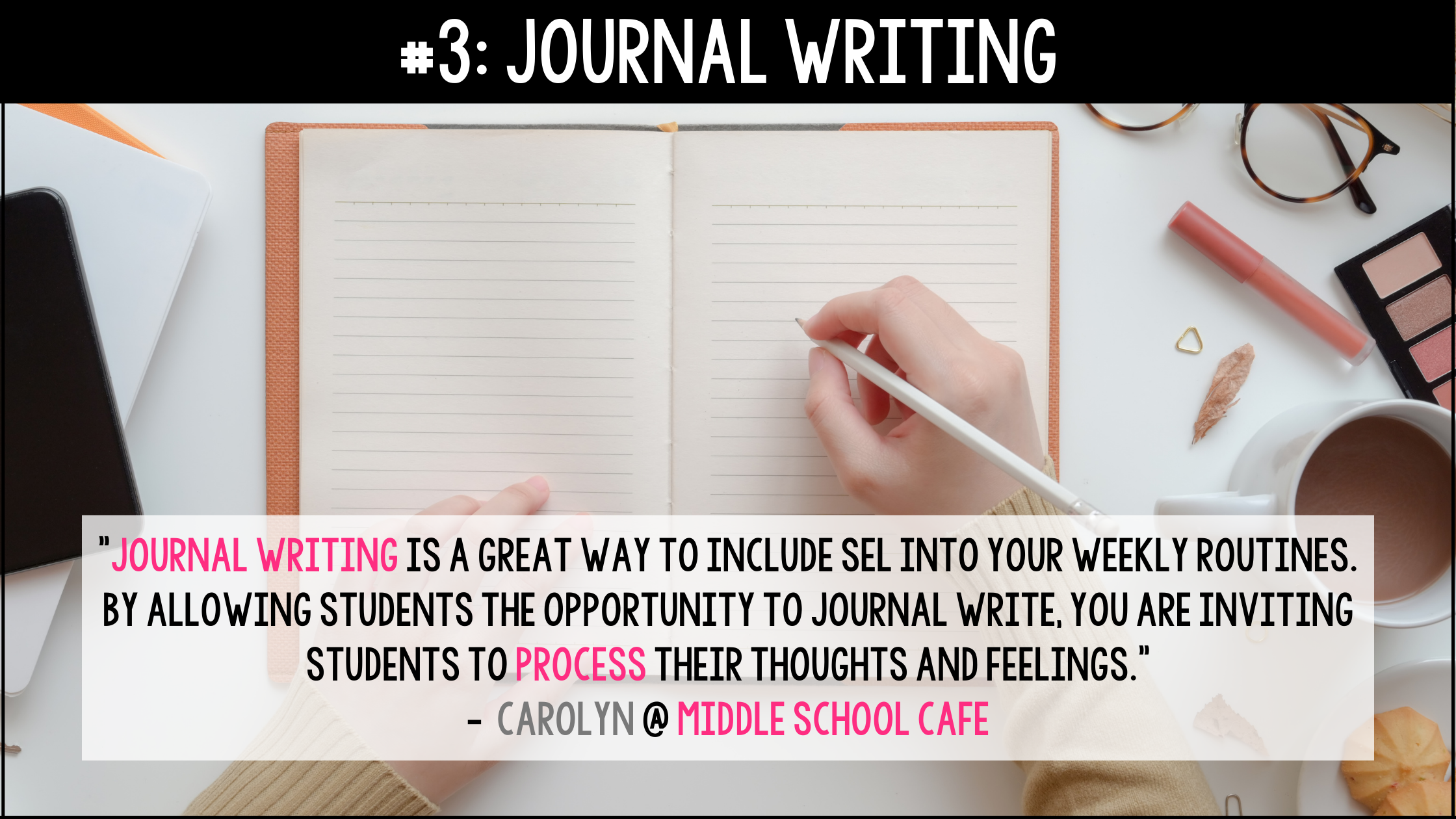
After an extended time away from school, many students come back to the classroom with an array of emotions. Carolyn from Middle School Cafe understands that it is important to take some time to help students work through their emotions by including SEL opportunities.
One easy-to-implement way to help students work through their feelings of returning to school (or process what they’ve been through during the break) is through journal writing.
Journal writing is a great way to include SEL into your weekly routines. By allowing students the opportunity to journal write, you are inviting students to process their thoughts and feelings. Additionally, you can assign a prompt to help guide their thoughts. For example, after being away for an extended period of time, you can give students the prompt “What did I learn during the break?” or “What is one thing you will miss about break?” These prompts give students an opportunity to reflect on their experiences, as well as how they were feeling during the break.
By incorporating journal writing into your teaching, you are giving students a safe space to express themselves and process their thoughts in a supportive and caring environment. This can be particularly beneficial for students who are struggling with their emotions or dealing with difficult situations. In addition, it is a great tool to help students develop strong self-reflection skills that will benefit them throughout their education and beyond.
#4: Set SMART Goals for the New Semester
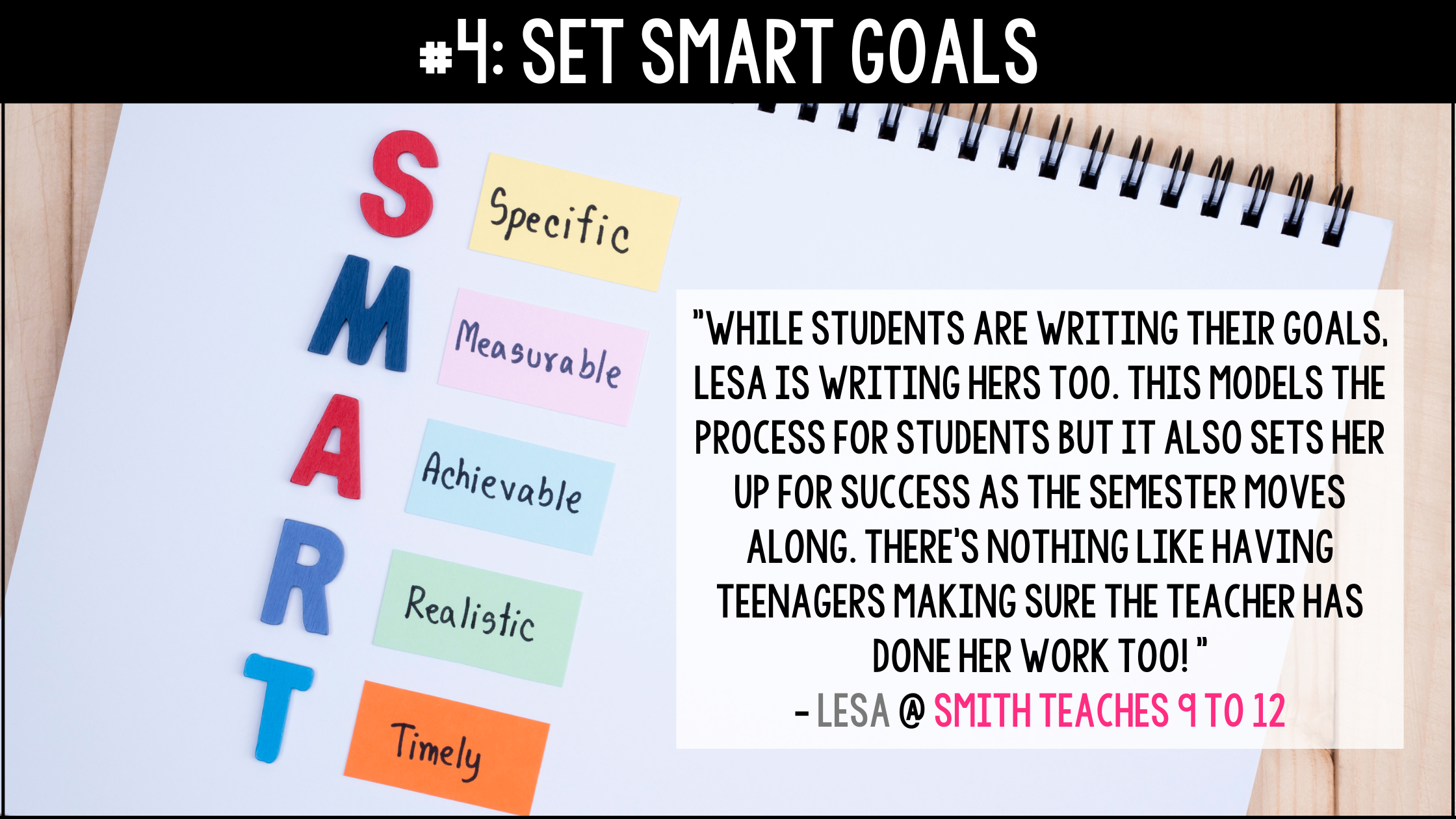
Whether you’re starting a new semester with the same students or a whole new group, goal setting is an ideal refresh for a new semester.
Lesa from SmithTeaches9to12.com always includes SMART goals as part of her plans for her students and herself!
While students are writing their goals, Lesa is writing hers too. This models the process for students but it also sets her up for success as the semester moves along. There’s nothing like having teenagers making sure the teacher has done her work too!
Here’s how you can do this in your class:
- Start with a goal-related quotation as a bell ringer for reflective writing or discussion.
- He who fails to plan is planning to fail – Winston Churchill.
- A goal without a plan is just a wish – Antoine St. Exupery.
- Define SMART goal. It’s one that’s Specific, Measurable, Achievable, Relevant, and Time-bound.
- Model your version for students. Example: “I want to read 1 book each month from a new author.”
- Give them time to write. Have a fast finisher activity set up so students can have the time and space they need to write. Wander the room to check in. Collect goals from students to help with accountability.
- Make the goal smart-ER. Aim to revisit twice in the term to Evaluate and Reward. A goal might need to be adjusted or perhaps a new one needs to be set.
If your goal is to stress less and have more time for yourself, then you need this full lesson that’s all ready for you to use.
And read more about how to make SMART goals even SMARTER at ELA Matters, a collaborative blog for middle and high school English teachers.
#5: A New Poem for Each Week of the New Semester
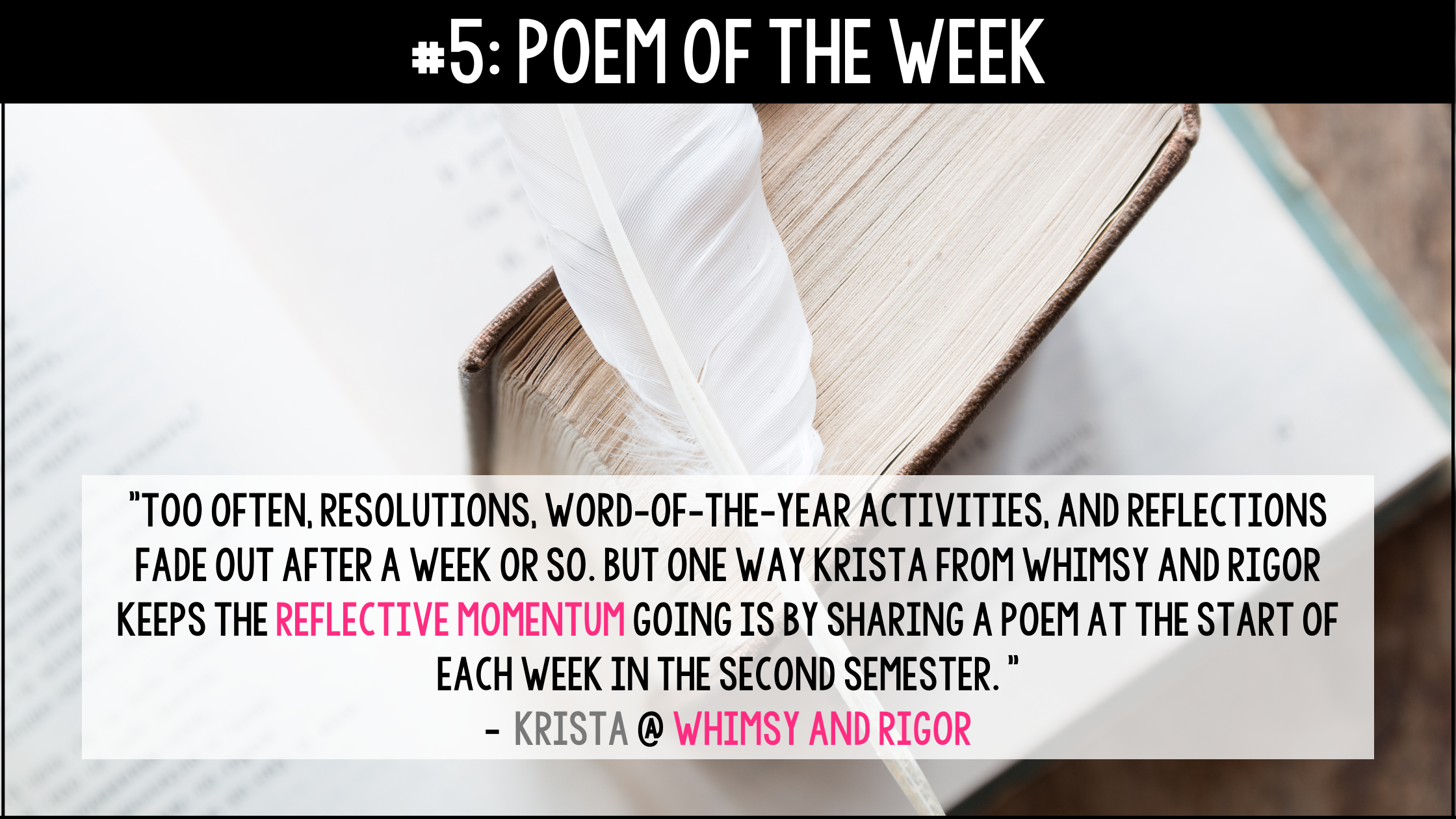
Too often, resolutions, word-of-the-year activities, and reflections fade out after a week or so. But one way Krista from @whimsyandrigor keeps the reflective momentum going is by sharing a poem at the start of each week in the second semester.
Scheduling a short but effective lesson into the week’s plan helps Krista and her middle school students stay focused on all the hopes and promises and goals they may have set in January.
As with many things in the teacherverse, Krista came across this Google Slide presentation on Instagram from @smithteaches9to12 who got it from the Twitter account of @theVogelman and knew it had a place in her classroom.
This resource dedicates one slide per poem and includes questions that help students not only analyze the poem but also apply its concepts to their own life.
To access the editable slides and help students hang on to the fresh start they felt in January, just click here!
#6: Complete a Reading Inventory
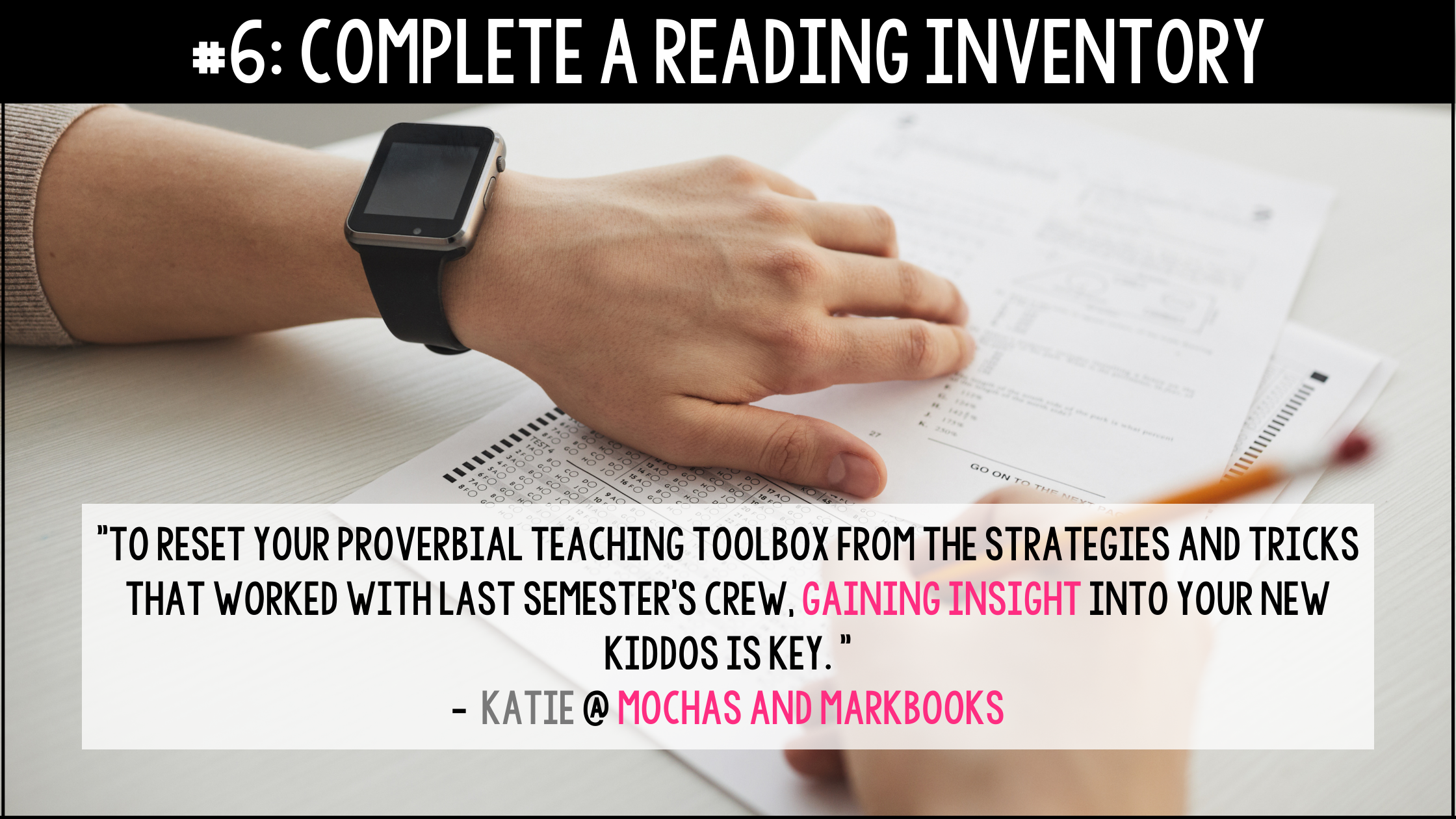
At the start of a new semester, Katie from Mochas and Markbooks knows the importance of gathering student data. To reset your proverbial teaching toolbox from the strategies and tricks that worked with last semester’s crew, gaining insight into your new kiddos is key. Katie uses a variety of diagnostic assessments but has found one form of data collection particularly helpful and that’s the reading inventory.
Reading inventories provide a valuable insight into our students’ habits, interests and attitudes as readers. Gathering reading inventory data at the start of a year or semester will help to plan engaging lessons that include students’ preferred reading genres, include students’ preferred methods of reading, plan intervention and support for students’ specific reading needs, provide a sense of how much your students are reading, and connect you and your students with clear reading goals to work towards.
If you’re not sure where to start with a reading inventory, or you are looking for a new template, check out Katie’s inventory handout here.
#7: Strengthen Classroom Culture with Poetry

Yaddy from Yaddy’s Room loves to look for new opportunities to incorporate relational capacity building activities for students at the beginning of the semester. Jose Olivarez’s poem “Ode to Cheese Fries” is an excellent choice for introducing students to the power of poetry. The poem is both relatable and accessible, making it perfect for high school English classes.
The first thing that makes “Cheese Fries” stand out as an introduction to poetry is its accessibility. The poem uses everyday language, simple structure and imagery, which helps students understand the main ideas without feeling overwhelmed or intimidated by more difficult concepts. This encourages them to feel more comfortable engaging with their emotions when discussing the text.
The poem also incorporates cultural references that are familiar to today’s young readers like “Popeyes,” which acts as an entryway into understanding the deeper message of the poem. Through this familiarity, students can begin to connect with its themes on a personal level and relate it to their own experiences in life.
Beyond its relatability, “Cheese Fries” offers up several points of analysis that can be explored further at the beginning of the year. Questions such as “What does food represent in the poem?” or “What is being said about identity?” can be used as jumping-off points for conversations about topics like poverty, race and culture.
You can check out this free Craft Activity that goes along with the poem at the link here. Or you can check out Yaddy’s lesson here.
#8: Graffiti Brainstorm Strategy for a New Semester
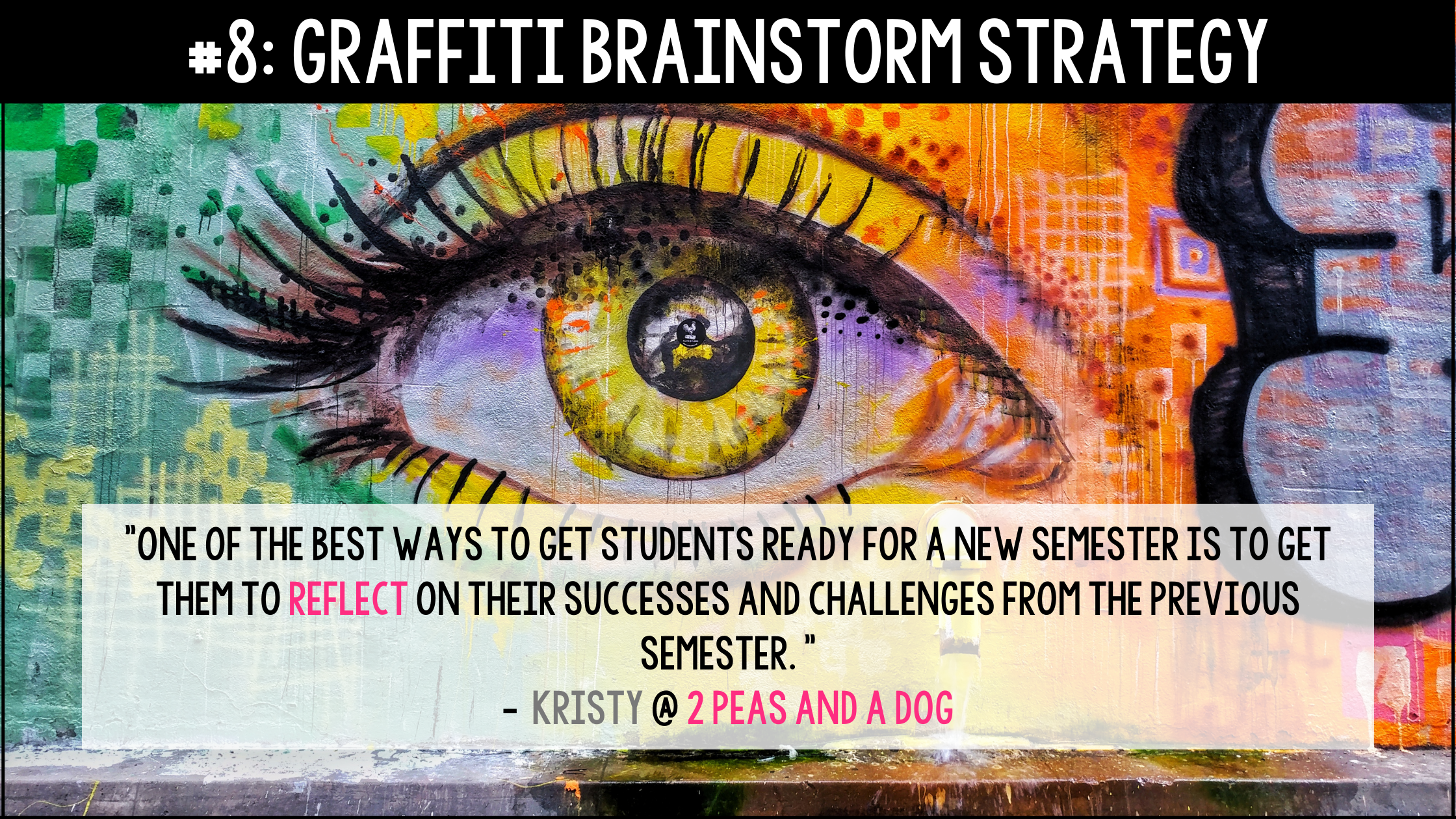
Kristy from 2 Peas and a Dog loves to help her classes reset for a new semester. This sometimes occurs after the December break or in February for some places. One of the best ways to get students ready for a new semester is to get them to reflect on their successes and challenges from the previous semester.
After students complete their individual reflections, have them share their thoughts anonymously on chart paper using the graffiti strategy. Once all the students have had a chance to share their successes and challenges as a class try to brainstorm ways to help students solve their challenges. Write down the solutions in both digital and chart paper format so students can reference the ideas in your learning management system (e.g., Google Classroom) and see the ideas hung up in the classroom.
During the first month of the new semester, revisit these anchor charts weekly with your students to remind them of the crowdsourced solutions. Here is Kristy’s free New Years’ Reflection Resource.
#9: Create a Collaborative Block Poster
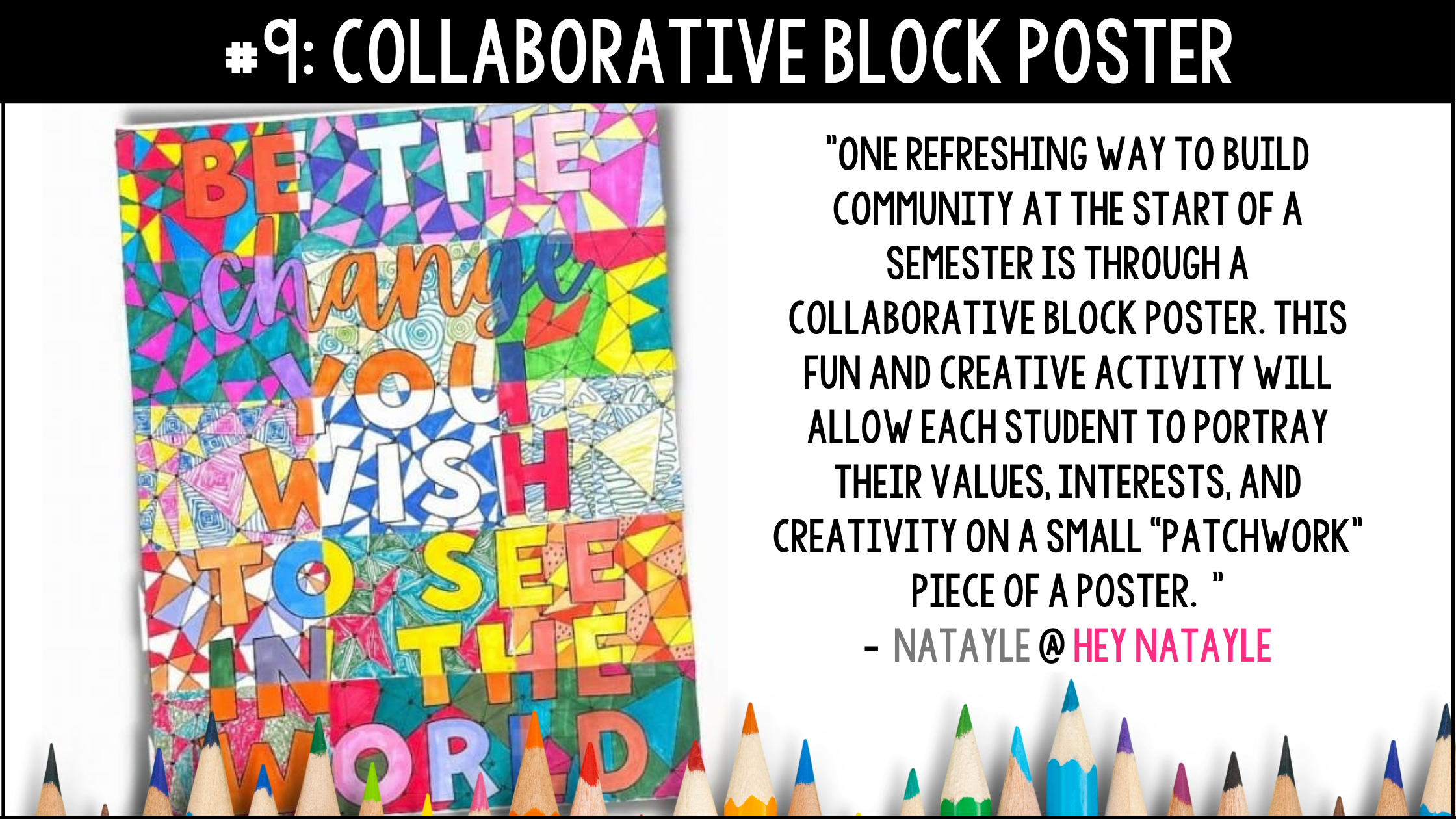
Often, the beginning of a new semester means the adjustment of class rosters. Whether you’re welcoming new students, saying goodbye to others, responding to individual schedule changes, or launching a new course, these roster changes can upset your classroom communities. Natayle from Hey Natayle likes to prepare for these changes ahead of time by planning community-building activities at the start of a new semester.
One refreshing way to build community at the start of a semester is through a Collaborative Block Poster. This fun and creative activity will allow each student to portray their values, interests, and creativity on a small “patchwork” piece of a poster. Once the individual pieces are finished, students combine them to create an end result representing their collective identity.
Take a closer look at examples of Natayle’s Collaborative Block Posters for the New Year here.
#10: Classwide Publishing Project
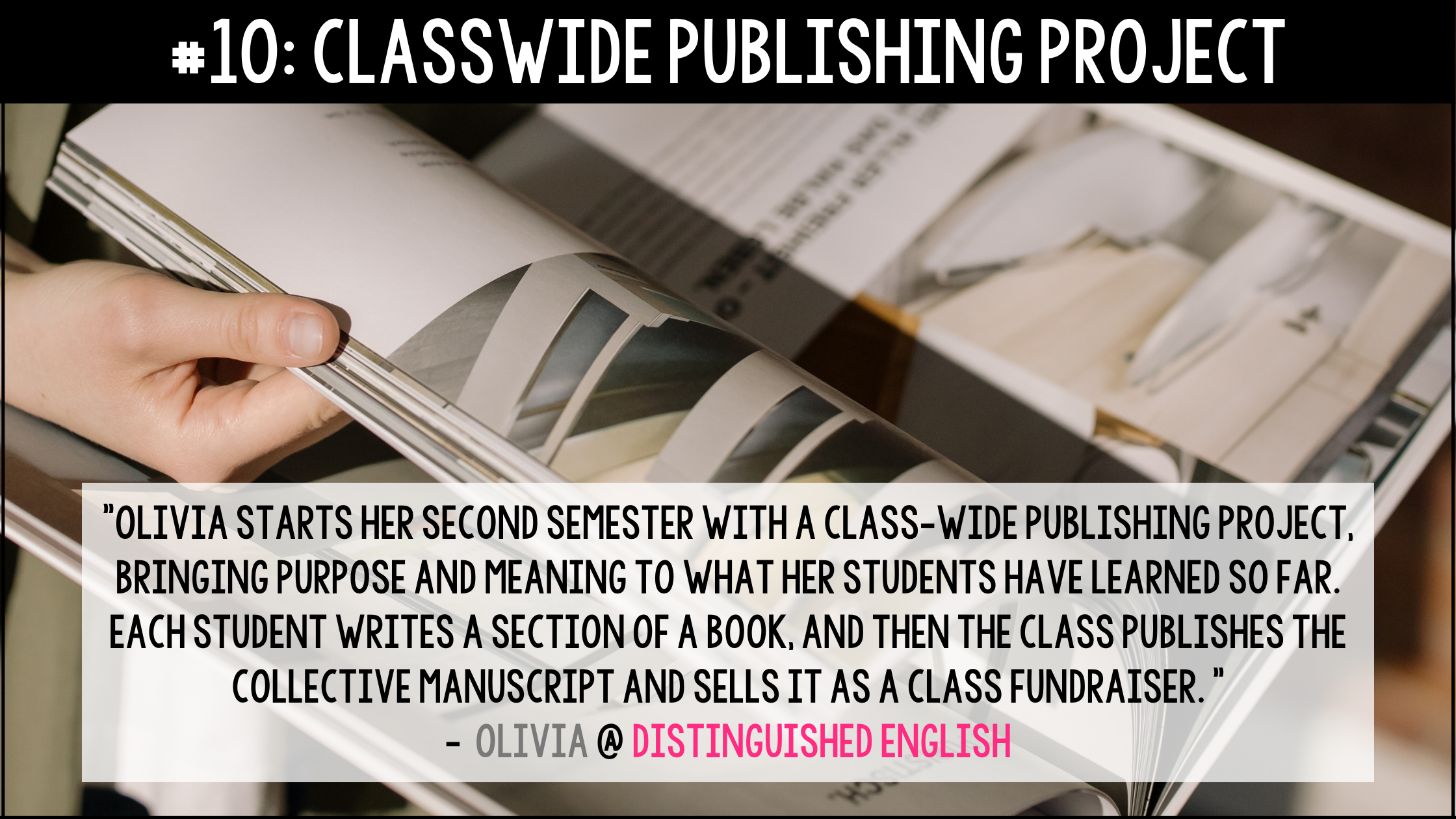
A new semester is an opportunity to do something big, and Olivia from Distinguished English takes full advantage!
During the first semester of the school year, her students learn the basics of writing coherently, but when those kids come back from winter break? It’s a whole new game.
Olivia starts her second semester with a class-wide publishing project, bringing purpose and meaning to what her students have learned so far. Each student writes a section of a book, and then the class publishes the collective manuscript and sells it as a class fundraiser. It’s a huge hit!
You can read more about Olivia’s passion for publishing her students’ writing here.
#11: Growth Mindset Monthly Markers
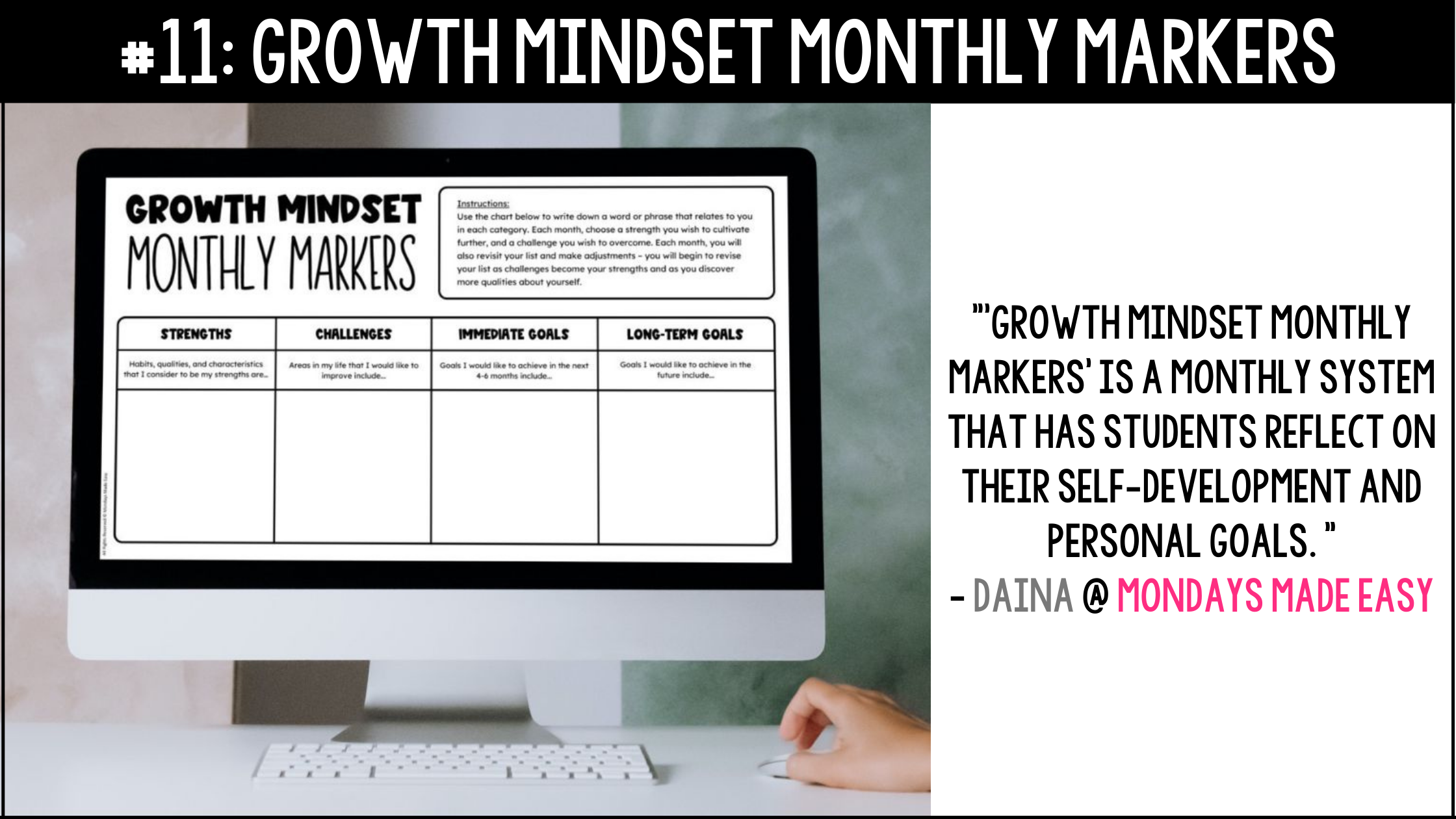
The start of a new semester is the perfect opportunity to set goals in your classroom. If your students have made new year’s resolutions, they might already have some goals in mind! When it comes to setting goals, Daina from Mondays Made Easy likes to coach her students through the use of “Growth Mindset Monthly Markers.”
“Growth Mindset Monthly Markers” is a monthly system that has students reflect on their self-development and personal goals. Students can fill out a chart with four columns: “strengths,” “challenges,” “immediate goals,” and “long-term goals.” Daina recommends having students select one strength to further develop, and a challenge to overcome – these two goals can be written down somewhere visible (like their school calendar).
Each month, prompt students to revisit their chart and reflect on how their strengths, challenges, and goals have changed. It can help for students to both acknowledge their growth, and consider factors that have prevented them from reaching their goals.
By re-evaluating their strengths and challenges, students can keep themselves accountable and recognize the value of re-approaching their goals from a new angle. This reflective practice invites a growth mindset for our students and encourages them to adopt the language of growth in the classroom.
Daina’s Digital Student Planner includes a “Growth Mindset Monthly Markers” graphic organizer, along with weekly and monthly prompts to instill reflection and growth mindset in your classroom.
#12: Expectations Skits to Reset New Semester Routines
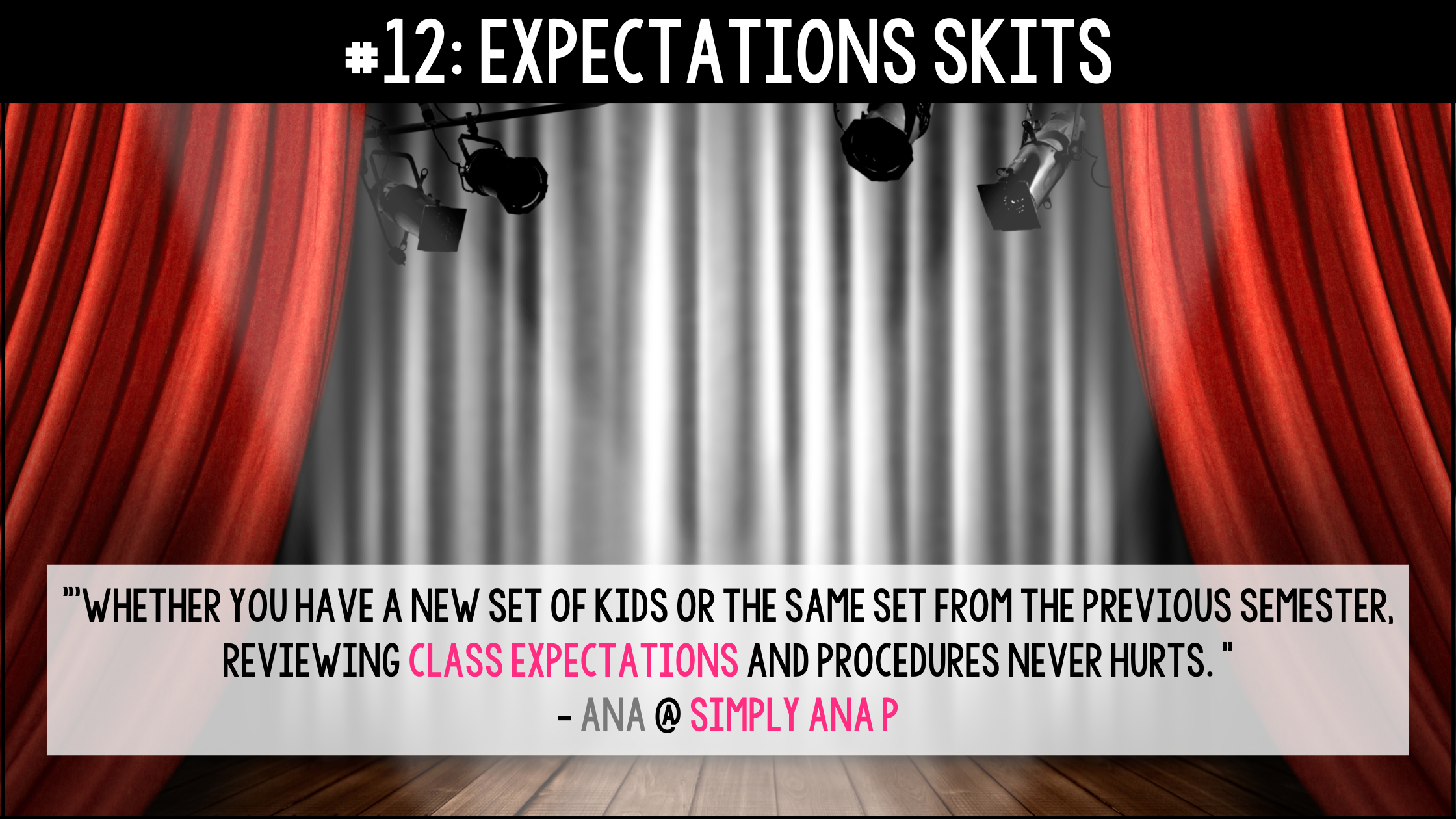
Whether you have a new set of kids or the same set from the previous semester, reviewing class expectations and procedures never hurts.
Ana from Simply Ana P likes to put it on the kids to review these items by breaking them up in groups, assigning a collaborative Google Slides deck, and tasking them with a presentation and an accompanying short, less-than-2-minute skit.
You can randomize the groups or have students pick their own. Then, assign them a collaborative slide deck like this one (make sure the editing access is set to everyone), and give students around 10 minutes to set up their group’s slide and prep for the skit.
Afterwards, each group presents the information and their skit. During presentations, Ana suggests asking questions and adding whatever other pertinent information/reminders might have been missed.
For a little added ante, you can make a small competition, by having students vote for the best skit and/or the best slide (encourage images, color, etc.)
Lastly, post the slidedeck on Google Classroom for an easily accessible reminder for students during the rest of the semester
Starting a new semester can feel like a daunting task, but it doesn’t have to be. Bring joy and excitement into the new semester with any of these creative ideas.
Which idea are you most excited to try? Let us know in the comments below!
Happy teaching!


